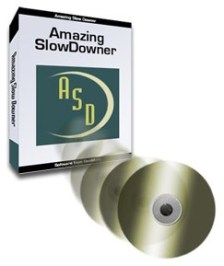
We use insect swarms as a model system for identifying how organisms harness the dynamics of communication signals, perform spatiotemporal integration of these signals, and propagate those signals to neighboring organisms. So how do organisms solve this challenge, using only natural resources? Ideas from computer science, physics and mathematics, such as energetic cost, compression, and detectability, define universal criteria that almost all communication systems must meet. As humans, we easily forget how hard it is to communicate within natural environments.
Amazing slow downer 2.76 full#
Abstract: Our world is full of living creatures that must share information to survive and reproduce.
 Presenter: Orit Peleg, Biofrontiers Institute, Computer Science, University of Colorado Boulder. September 1 - "Physical Computation in Insect Swarms" I will also present on our first steps out of the NISQ era with a demonstration of real-time fault-tolerant quantum error correction. I will present the benchmarking methods used to quantify the performance of our computer, along with results from a handful of quantum algorithms. We realize the quantum charge coupled device (QCCD) architecture first proposed at NIST with a fully reconfigurable chain of trapped atomic-ions on a multi-zone surface electrode trap. I will give an overview of Honeywell Quantum Solutions' first generation of commercial quantum computers. Abstract: Noisy Intermediate-Scale Quantum (NISQ) computers are now commercially available for use though cloud access. Presenter: Brian Neyenhuis, Honeywell Quantum Solutions.
Presenter: Orit Peleg, Biofrontiers Institute, Computer Science, University of Colorado Boulder. September 1 - "Physical Computation in Insect Swarms" I will also present on our first steps out of the NISQ era with a demonstration of real-time fault-tolerant quantum error correction. I will present the benchmarking methods used to quantify the performance of our computer, along with results from a handful of quantum algorithms. We realize the quantum charge coupled device (QCCD) architecture first proposed at NIST with a fully reconfigurable chain of trapped atomic-ions on a multi-zone surface electrode trap. I will give an overview of Honeywell Quantum Solutions' first generation of commercial quantum computers. Abstract: Noisy Intermediate-Scale Quantum (NISQ) computers are now commercially available for use though cloud access. Presenter: Brian Neyenhuis, Honeywell Quantum Solutions. 
August 25 - "Honeywell's commercial trapped-ion quantum computer" unless otherwise noted and will be in person at DUAN G1B20, as well as online via zoom and Youtube.






 0 kommentar(er)
0 kommentar(er)
